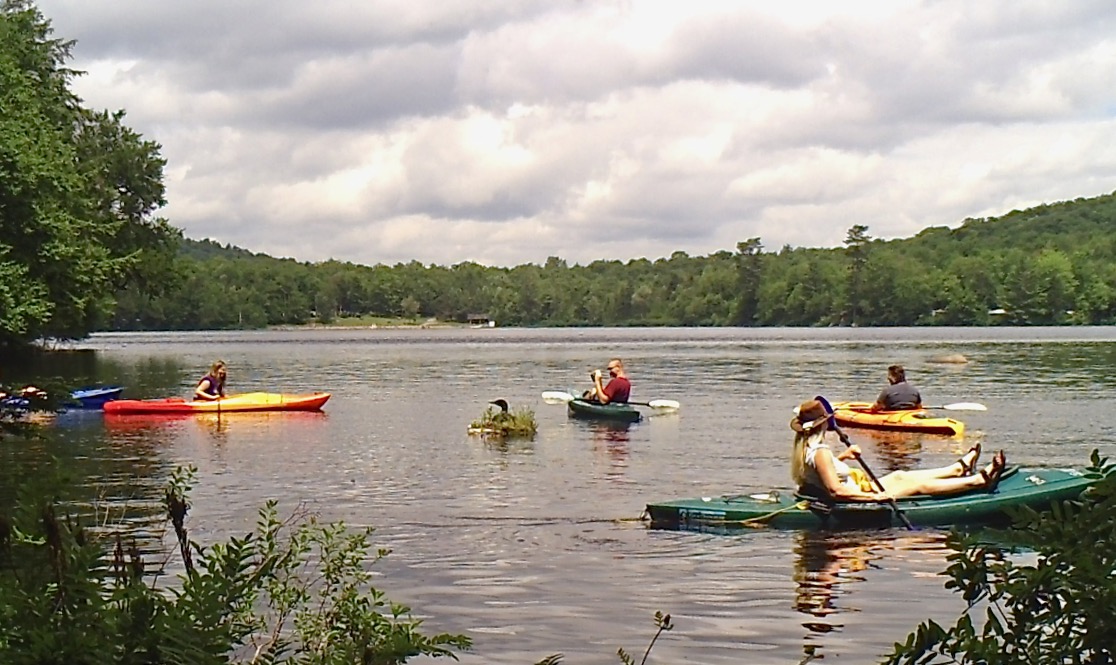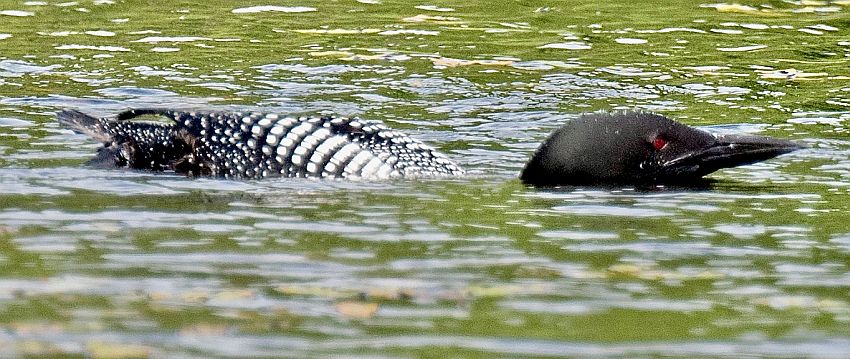
Nesting Loons and Human Interference

We are observing way too many occurrences of loon nest interferences here in the Belgrades. Approaching a common loon nest must be done with extreme caution and respect, as loons are sensitive to human disturbance and may abandon their nests if they feel threatened.
So how is it best to approach a loon or a nest both responsibly and ethically? The rule is, just don’t approach if you don’t have to. If you’re just observing or photographing, use binoculars or a telephoto lens from a distance, at least 150 feet away. And please, never bring pets anywhere near a loon or a nest. We see this a lot with dogs on a paddleboard, in a kayak or a canoe. For the record, loons are also federally protected and harassment or disturbance is illegal.
If the nest is on a floating platform or island, you’ll never want to approach directly and always quietly observe their behaviors from a responsible distance. You’ll also want to stay low to avoid creating a tall, intimidating silhouette. That’s another reason paddleboards are considered a major threat. Remember that there is so much to learn from the bird’s behavior if we can just step back for a while and observe without their reactions to our presence.

Watch for the warning signs: If the loon slides off the nest and swims away you will need to back off immediately! Vocalizes (yodels, tremolos), especially the “wail” call is your clue that you are much too close and the loon feels threatened and distressed. If the loon flattens himself, he/she does not want to be seen and feels threatened. As a result, we never want to just linger there. Prolonged presence is a major cause of nest abandonment.
Thank you for your awareness and help in educating those less observant. If you have questions regarding our Belgrade loons, please email your inquiry to info@blamaine.org, and we will try to answer your question either in this column or via email. Have a great summer enjoying the Call of the Loon!
Read a related article.
Dick Greenan is chairman of the Belgrade Lakes Association’s Loon Preservation Project.
Download Full Newspaper: High Res | Low Res (Details…)
<— Previous Article • Summaries • Next Article —>
©2025 by Summertime in the Belgrades. All rights reserved.